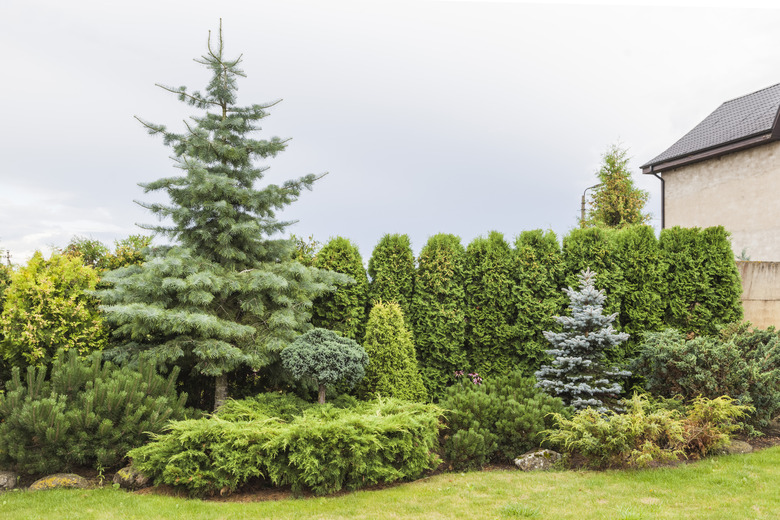What Is The Life Span Of Pine Trees?
If you hike the trails of the White Mountains of Eastern California, you'll find tiny growths of pine trees (Pinus spp.) are adjacent to those that soar up to elevations of 10,000 feet. While the mature trees are considered to be of great age, the surprise is that the little growths aren't recently planted and might be 40 years old.
Of all the species of pines, bristlecone pines (Pinus longaeva, USDA zones 4-8), found just below the treeline in the mountains of Utah, Nevada and Eastern California, are the oldest living pines, according to the National Park Service, with lifespans that reach thousands of years. Their cousins, the dwarf mugo (Pinus mugo var. pumilio, zones 3-7) and mugo pines (Pinus mugo, zones 2-8) have a life expectancy of only 50 years, which is short by pine tree standards.
Understanding Pine Tree Biology
Understanding Pine Tree Biology
Found primarily in the Northern Hemisphere, all species of pine trees, of which there are more than a hundred, survive cold temperatures and high altitudes. They are selfish in that their limbs stretch to close out light that might reach the forest floor, preventing the growth of many types of other plants. Those numerous limbs also collect the falling snow, distributing it so as not to burden just a few of the limbs, causing them to fall.
Pines can grow in soil that lacks nutrients, and the cold climate that forces the trees to shut down during extreme temperatures contributes to their longevity. Just as bears hibernate during cold winters, pine trees entering dormancy is their way of surviving. Trees grown in warmer climates don't survive as long as cold-weather pine trees.
Short Pine Tree Life Spans
Short Pine Tree Life Spans
In addition to the mugo pine, other pines also have shortened life spans. The Italian stone pine (Pinus pinea, zones 9-10) grows best in warmer, drier climates, such as those found in Southern California and the Mediterranean. Those found in urban areas can expect a life span of around 50 years due to the air quality and the limitations to their deeply entrenched roots, while those grown in the wild can live up to 150 years.
The golden pine (Pinus virginiana 'Wate's Golden,' zones 4-8) is another of the short-lived pines and is found in the Appalachian foothills. While it can withstand most soil conditions and is slow growing, the tree's life span ranges up to 90 years.
Long Pine Tree Life Spans
Long Pine Tree Life Spans
America's Christmas tree, the Scotch (or Scots) pine (Pinus sylvestris, zones 2-7), native to Northern Europe, Siberia, the far reaches of Northern China and Ohio, is slow growing. It has a life span of up to 300 years, given the right environmental conditions and allowed to live past Christmas.
The lodgepole pine tree (Pinus contorta var. latifolia, zones 3-7) adapts to almost any environmental condition, either cold and wet or dry and warm. Its name describes its best use when harvested by the early settlers of the West, from the Yukon in Canada down to Baja, California. Granite, shale and lava are the preferred soil types that lead to the tree surviving up to 400 years.
Pine Tree Survival Basics
Pine Tree Survival Basics
Give a pine tree enough sun and water, and it will survive almost any conditions. The edges of woodlands are where you'll find the young trees, as they are open to sunlight, whereas deep within the woods, little sun comes through. Moist terrain is preferred only by the lodgepole pine, while others grow best in dry, well-draining soil of various consistencies.
